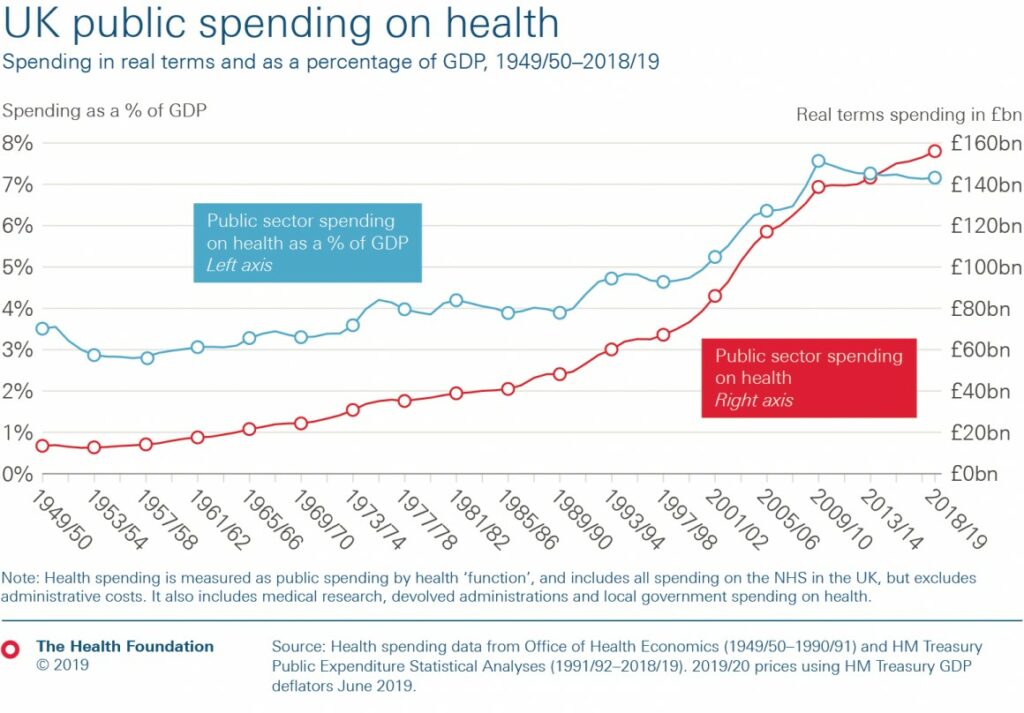What we are seeing in the UK is an example of giving commercial healthcare too much latitude in providing healthcare. Private equity became involved with care for older people and care became chargeable and means-tested, long-stay hospitals were closed. and the government gave over the building of new facilities to private interests. Th US is just starting to experience the growth of mega-healthcare corporations having tenacles in the lowest layer of healthcare with doctor orgs. to the upper levels in hospitals. They are large enough to charge whatever they care too. In regions there is little competition and insurance companies can not force lower prices in negotiation as a result. Looking at what is happening in the UK can be a picture of
Topics:
run75441 considers the following as important: Healthcare, PNHP, politics, UK Healthcare
This could be interesting, too:
Robert Skidelsky writes Lord Skidelsky to ask His Majesty’s Government what is their policy with regard to the Ukraine war following the new policy of the government of the United States of America.
Joel Eissenberg writes No Invading Allies Act
Ken Melvin writes A Developed Taste
Bill Haskell writes The North American Automobile Industry Waits for Trump and the Gov. to Act
What we are seeing in the UK is an example of giving commercial healthcare too much latitude in providing healthcare. Private equity became involved with care for older people and care became chargeable and means-tested, long-stay hospitals were closed. and the government gave over the building of new facilities to private interests.
Th US is just starting to experience the growth of mega-healthcare corporations having tenacles in the lowest layer of healthcare with doctor orgs. to the upper levels in hospitals. They are large enough to charge whatever they care too. In regions there is little competition and insurance companies can not force lower prices in negotiation as a result.
Looking at what is happening in the UK can be a picture of what will be experienced in the US. .
UK National Health Service Woes Due to Privatization & Funding Cuts. PNHP
Summary: The UK national health service has been a highly regarded and popular model of public financing and ownership of health services. That is, until the British government fostered privatization and during Conservative rule, imposed austerity budgets. It can still be saved.
Chart taken from: “Health spending as a share of GDP remains at lowest level in a decade,” The Health Foundation
You don’t need a weatherman to know which way the wind blows. Subterranean Homesick Blues by Bob Dylan. And . . .
You don’t have to work in a hospital to know Britain’s N.H.S. is in the most serious crisis of its history. You just have to be injured, or ill. And hundreds of thousands of people have had a doctor’s referral for outpatient care at a hospital rejected because there are no available appointments.
They are simply bounced back to the doctor to begin the process again.
That the flagship health care service of one of the wealthiest countries in the world is in such a state is shocking, but not without explanation. Decades of marketization, 10 years of Conservative austerity and a pandemic have hollowed out the N.H.S. So much so, the people who can afford to, and increasingly those who can not afford to, are having to pay for health care.
AB: Whether you realize it or not, this is a supply chain issue. A service related one which has occurred with the provision of public health services replaced by for profit healthcare. Some of what occurred in the US during the pandemic were a contrived supplied chain issues. Limit supply and you can charge more eve though cost did not increase.
A two-tier system with more and more in common with American health care is taking shape. It’s not working, and we’ll soon be at the point where it’s too late to do anything about it.
The damage to the N.H.S. was inflicted in three main waves.
In the late 1980s and early ’90s, a Conservative government introduced the internal market and closed long-stay hospitals, where care was free, and under the euphemistic banner of “care in the community.” Private nursing homes backed by equity investors took over provision for older people and care became chargeable and means-tested.
In the late 1990s and early 2000s, Labour under Tony Blair built dozens of new hospitals with money from partnerships with private investors.
In 2010, the Conservatives, back in power alongside the Liberal Democrats (until 2015) embarked on a decade of austerity.
The cumulative effect was devastating.
People are tired of waiting, or not able to wait, and more and more are paying for private treatment.
People are reportedly taking out loans to pay for operations. In a development familiar to Americans, and something quite new in Britain, more and more people are turning to GoFundMe to raise money for medical treatment.
The government has done plenty to encourage this shift. In 2012, the Conservatives increased the cap on what percentage of an N.H.S. hospital’s income could come from treating private patients to 49 percent.
What we do know is Britons who want to use the N.H.S. are finding it increasingly hard to do so.
The N.H.S. as Britons have known it, accessible, free at the point of use, and cherished is becoming something else. But as long as there are still people willing to fight for it, it’s not too late to save it.
Recent posts on this topic:
Plans to Cut Billions in Medicare Fraud Ignites Lobbying Frenzy, Angry Bear, (angrybearblog.com).
Accountability for Medicare Advantage Plans is long Overdue, Angry Bear, (angrybearblog.com).

